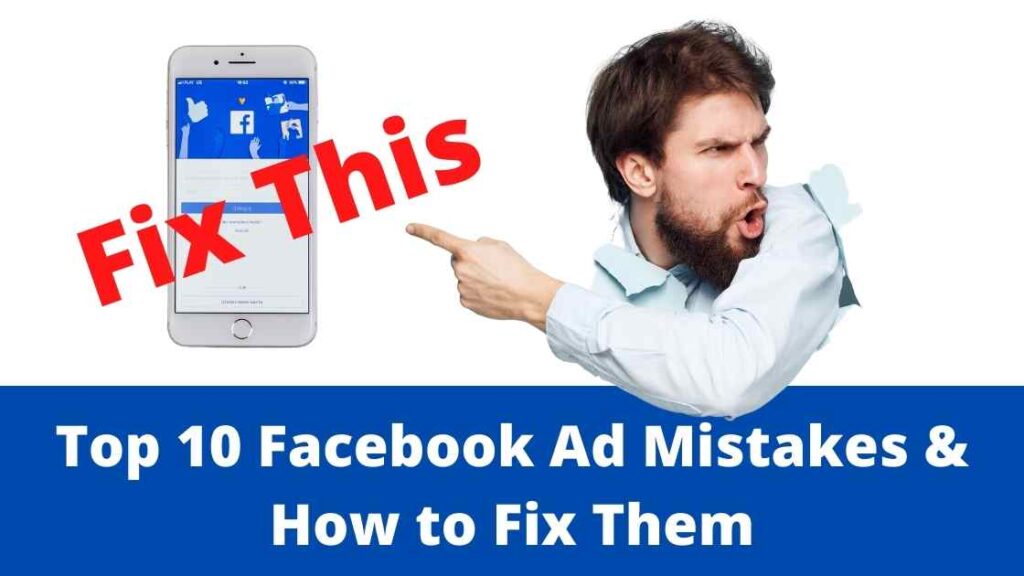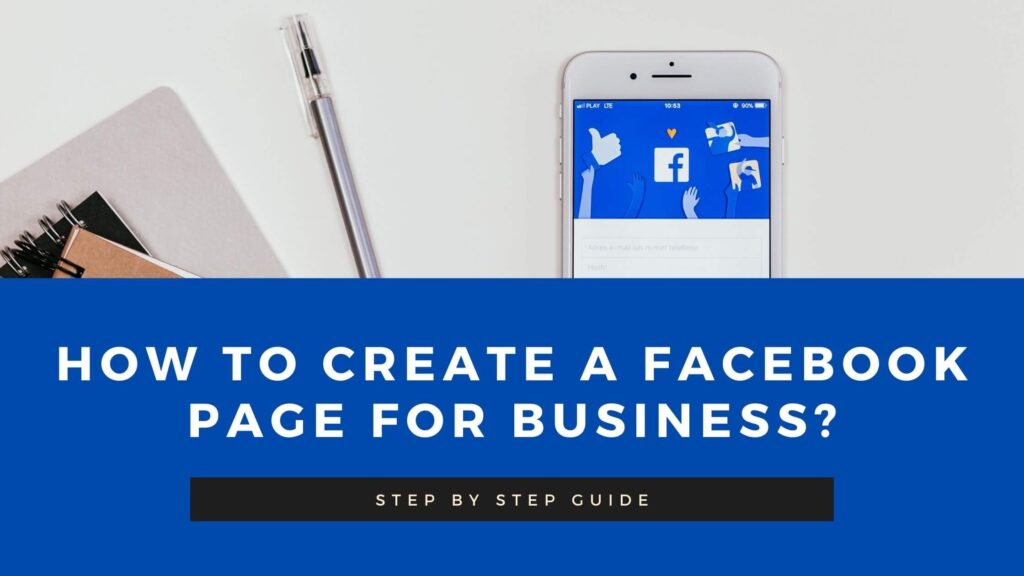It’s easy to see if your Facebook Ads aren’t working. It’s a lot more difficult to diagnose why. today we’ll walk through the 10 most common Facebook Ad mistakes and how to fix them.
- 10 Facebook ad Mistakes
- Facebook Ad Objectives.
- Facebook Audience Testing.
- Warm Audiences.
- Ad Destination.
- Call-to-Action.
- Budgeting.
- Facebook Ad Account Structure.
- Facebook Ad Creative Testing.
- Tracking Data.
- Campaign Planning.
Facebook ads are complex. That’s probably why you’re reading this article. If you’re not seeing the conversions or return on investment that you’re looking for, these 10 mistakes could be to blame.
Facebook Ad Mistakes #1: Selecting the wrong objective.
The Facebook Ad objective plays a major role in the types of results that you receive. Most people underestimate just how important this is. For example, selecting the traffic objective as opposed to the conversions objective will significantly impact your conversions even if they are going to the same landing page.
The most important things to consider when deciding which objective to select is what type of audience are you sending these ads to, and what is the true goal of these ads? If the goal is to get opt-ins, scheduled appointments, or purchase conversions, you need to be using objectives like lead generation, potentially messages, or that conversions objective. If this is to simply build an audience, you would use objectives like video views, traffic, or engagement.
Facebook Ad Mistakes #2: Not testing your audiences.
With all of the changes that have recently been made, especially with iOS 14, some audiences that may have worked well in the past are no longer working. It could be that you simply need a new audience refresh. If you’re not actively testing audiences to continue to find the best possible targeting for your ads and your business, you are leaving money on the table. Some examples of audiences that you should be testing are targeted lookalike audiences or super lookalike audiences, as well as behavioural or interest-based audiences.
Facebook Ad Mistakes #3: ties right into the audience targeting mistake and this is ignoring your warm audiences.
Your warm audiences are people who have engaged with you, who are aware of you and who most likely have some interest in what you’re selling. This group of people is gonna be made up of your custom audiences. Too many business owners are not actively targeting their warm audiences regularly. despite this audience being the most qualified and the most likely to convert.
Facebook Ad Mistakes #4: Sending your ads to the wrong destination.
First and foremost, you should never really be sending anyone to the homepage of your website. You want to make sure you’re sending them to a page designed around the offer you are trying to get them to convert on.
The next thing that I would consider is your website or landing page load times. People are very impatient and if it’s taking too long to load, you’re gonna be losing a lot of interested parties who simply aren’t willing to sit and wait around.
Another great option to test is the lead form through the lead generation objective. Too many people have never really given this option a try. However, if you are attempting to generate leads or scheduled calls, this can be a really easy way to see if your conversion rates could be higher. If you’re selling e-commerce, you could be selling with Facebook and Instagram shops where someone can pay directly through the platform.
Facebook Ad Mistakes #5: Having more than one call to action.
There is a saying that says a confused mind doesn’t buy and that is the case. You need to make sure that every single ad you’re running has one clear and concise call to action. If you’re trying to get a conversion on a specific product, stop mentioning all of the other products you sell. Keep people focused on the one single action Do you want them to take or the one offer you want them to purchase.
Facebook Ad Mistakes #6: Using the wrong budgeting options.
There are several different budgeting mistakes that I see people making, such as using the CBO or campaign budget optimization option when it is not truly appropriate. Unless your audience sizes are very large, this is not a good fit. On that same note, if these audiences or these ads have not previously been tested and proven to work, CBO may not be the best option for you.
Another mistake that I see is that people will set their budget way too low. You’re making it extremely difficult for Facebook to help you find more conversions. You need to make sure that you are setting that budget high enough that it gives the system some wiggle room to seek out those right ideal buyers, find that data on who is converting and then allow your ads to reach more of those people.
Another mistake would be keeping individual ad set budgets too low. If your ad is working inside of an existing ad set, you’re gonna see better results by increasing that ad set budget, as opposed to spreading that budget out across various ad sets. On that same note, too many people are adding multiple unproven ads into one individual ad set. The way that Facebook works, it’s going to give most, if not all of your budget to one, maybe two of those ads and the amount that they’re getting will not be the same. If those ads have not already been proven, you simply won’t be able to test the rest of them.
Facebook Ad Mistakes #7: Structure your ad account incorrectly.
There are several different ways that this could be happening.
- A sure-fire way to tell is if you look in your ad account and there are hundreds of campaigns inside of it, or if you can’t look at your campaigns and tell exactly which each one is for, the conversion objective, the products and services it’s selling, and what the goals might be for that specific campaign without actually having to look at the ad level.
- Another mistake that we just mentioned is having too many ads within one ad set. I highly recommend you to have lots of different ad sets inside of a campaign, but keep one ad per ad set if you want to make sure that ad receives an adequate budget.
- Another mistake is having too many campaigns with the same objective. Keep in mind that you can add new ads or new ad sets to an existing campaign. The objective simply has to be the same. Organizing your campaigns based on their goals is very, very important.
- I recommend that you structure your campaigns in three different groups. We call them level one, level two, and level three. Ultimately, building your audience is going to be your level one campaign with objectives like engagement, video views, or traffic. Level two is all about your offer and this is focused on conversions. And level three will be your retargeting ads.
Facebook Ad Mistakes #8: not testing multiple creative formats.
If you’re not trying a variety of formats, your audience is not going to be able to show you what they prefer or what’s working best. This could include video, but also different styles of video, shorter form versus long form, maybe animated versus talking head. You also could do things like carousels, which can work very well and are not used nearly enough. You could also test single-image ads if you have not been using those or even animated style images. An easy way to test out a new creative format is to simply take an ad that’s already working and ask yourself, how could I take this same creative, but remake it in a new format?
Facebook Ad Mistakes #9: Inaccurate tracking data
This is critically important to your bottom line, and this is relying on inaccurate tracking data or not even having the necessary tracking data at all. This has become increasingly important after iOS 14 changed the way our ads dashboard reports our results. Not only is there a delay or an additional delay in those results being reported, but they’re also being under-reported right now by about 50% on average.
What you need to do is first and foremost, make sure that you understand your own internal KPIs so that you know what great metrics look like for you. Next, you need to make sure that you have every possible option in place to have accurate tracking, such as using UTM parameters in your ads, either using a third-party tracker or using something like the conversions API.
Another way to see the metrics that you need to see to be able to determine if your ads are working is simply by customizing your columns, which most people don’t even realize is an option.
Next, I highly encourage you to validate the results outside of Facebook Ads Manager. Your conversions exist somewhere outside of your ads dashboards, such as in your e-commerce store orders or your scheduling platform if you’re booking appointments, or you’re CRM if you’re generating leads. That data is there. The question is, can you attribute a lead, an appointment, or a sale to an individual campaign, ad set, and ad? While this can be a little bit more time-consuming, it is worth every single minute.
The more educated you are on where your highest paying customers or your actual sales conversions are coming from, the more money you can direct into those ads or those campaigns. On the flip side, if you assume that certain campaigns are producing financial results and they’re not, you could be wasting money.
You also could be missing out on the opportunity to scale the ads that are working, or you could be stealing budget from high-performing ads and giving them to ads that are simply not performing. This is very, very important to your overall success. So again, if there’s one tip I could reiterate today, it’s this one, have accurate tracking data and pay attention.
Facebook Ad Mistakes # 10: Not having a plan.
First and foremost, you need to understand your offers, but secondly, you need to dive into Ads Manager with a plan in place in terms of
- what campaigns you’re creating,
- what their names will be,
- what your ad sets will be,
- the audiences you’ll be testing,
- the ad copy and the ad creative variations
- you’ll be testing, where you’ll be sending them,
- and what results you hope to see, as well as the metrics you’ll be tracking for those specific campaigns.
- Do a market reserch. many online market reserch tools are available now.
If you are going into Ads Manager, creating a campaign and making those choices as you go through your campaign creation, trust me, you are leaving so much money on the table. It’s also going to allow your ad copy and your ad creative to be far more effective, impactful, and streamlined across all of the ads in all of the campaigns that you’re running. You want to see your ad account as one single thing that is tied together and all of those campaigns should be working together in harmony.


